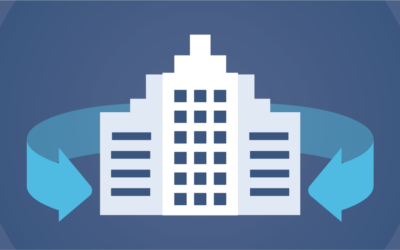The importance of sustainability in industrial water usage is underscored by some alarming statistics on global water consumption and scarcity. According to the United Nations, industrial water usage accounts for approximately 22% of global freshwater withdrawals, with this figure rising to 59% in high-income countries. The International Energy Agency (IEA) also highlights that energy production, which heavily relies on water for cooling, is the second-largest consumer of water globally.
Given the significant role that industrial activities play in global water consumption and the looming threat of water scarcity, it is imperative for industries to adopt sustainable water management practices. By reducing water usage, industries not only contribute to environmental preservation but also ensure the long-term viability of their operations.
One area where significant improvements can be made is in the management of chilled water systems. The following sections will explore various strategies and technologies that industrial facilities can implement to utilize water consumption more effectively.
Water Recycling and Reuse
One of the most effective ways to reduce water usage in chilled water systems is via water recycling and reuse practices. Instead of discharging wastewater, the water can be treated and reused within the system. Technologies such as reverse osmosis, ultrafiltration, and advanced oxidation processes can purify wastewater to a quality suitable for reuse. By recycling water, facilities can significantly reduce their freshwater intake, lower operational costs, and decrease their environmental impact. The most common recycling and reuse strategies include:
- Reverse Osmosis (RO) involves forcing water through a semi-permeable membrane that removes dissolved salts, bacteria, and other impurities. The purified water can then be reused in the chilled water system. RO systems produce high-quality water suitable for reuse, reducing the demand for fresh water and minimizing environmental discharge.
- Ultrafiltration (UF) uses a membrane to separate particles and macromolecules from water, enhancing the efficiency of RO systems and other advanced water treatment processes.
- Advanced Oxidation Processes (AOP) are special water cleaning methods that use powerful chemicals called hydroxyl radicals to break down tough pollutants that regular cleaning methods can’t handle. These methods often use things like ozone, hydrogen peroxide, and UV light to create the radicals that help make the water much cleaner and safe to use again.
- Biological treatments use helpful bacteria and microorganisms to break down and remove harmful substances from water. These tiny organisms eat the pollutants, cleaning the water naturally and making it safer to use. Some common treatments include using activated sludge to break down bacteria, membrane bioreactors (MBR) that use special filters and helpful bacteria to trap pollutants, and sequencing batch reactors (SBR) that clean water in batches using bacteria to break down pollutants.
- Electrodialysis uses electrically charged membranes to separate ions from water and is particularly effective for desalination and removal of dissolved salts.
- Rainwater Harvesting involves the collecting, filtering, storing, and use of rainwater for purposes such as cooling systems, process water, irrigation, landscaping, and sanitary needs. This practice reduces reliance on freshwater sources, lowers water bills, and mitigates environmental impact by decreasing runoff and pollution.
Closed-Loop Systems
Unlike open-loop systems that continuously draw in and discharge water, closed-loop systems recirculate the same water, significantly minimizing water losses and maintaining a controlled environment. By isolating the water from external contaminants, closed-loop systems maintain high water quality, reducing the need for extensive water treatment. This leads to improved system efficiency, reduced maintenance requirements, and enhanced operational reliability. Closed-loop systems are particularly beneficial in industries where water quality is a concern, as they offer better control over the water chemistry and reduce the need for extensive water treatment.
Transitioning from open-loop to closed-loop systems in industrial chilled water applications involves retrofitting existing infrastructure and implementing new technologies. The transition loosely follows a four-step process:
- A comprehensive water audit to assess the current system’s water usage, quality, and potential sources of contamination
- Detailed planning and design detail integrating closed-loop components such as chillers, heat exchangers, pumps, and advanced control systems
- Modifying the existing piping network to facilitate recirculation and implementing water treatment solutions to maintain high water quality
- Staff training to familiarize operators with the new operation and maintenance requirements
Optimizing Cooling Tower Operations
Cooling towers are a significant component of many industrial chilled water systems, and optimizing their operation can lead to substantial water savings. A few common strategies for reducing cooling tower water consumption include:
Water Treatment
Proper water treatment is essential for controlling scaling, corrosion, and biofouling, which can significantly reduce their efficiency and therefore increase water consumption. Effective water treatment involves:
- Using specific chemicals to prevent scale formation and corrosion. This helps maintain the heat exchange efficiency and reduces the need for frequent blowdowns, conserving water.
- Controlling the microbial growth that can lead to biofouling. Biocide use ensures that biological contaminants do not reduce the cooling tower’s efficiency, thereby maintaining optimal water use.
Blowdown Control
Blowdown involves the deliberate removal of a portion of water from the system to control the concentration of dissolved solids, such as minerals and other impurities, that accumulate over time due to evaporation. While critical for maintaining water quality, blowdown can be done more efficiently with a few new technologies and strategies:
- Automated Blowdown Systems: These control systems precisely monitor and adjust the blowdown rate based on real-time water quality data. Sensors measure the concentration of dissolved solids, and the system automatically initiates blowdown only when necessary. This minimizes water wastage and ensures optimal water quality, reducing the overall volume of water used in the blowdown process.
- Conductivity Meters: Installing conductivity meters and sensors in the cooling tower water system allows for continuous measurement of the water’s electrical conductivity, which correlates with the concentration of dissolved solids. Accurate monitoring ensures that blowdown occurs only when the concentration levels reach a specific threshold, thus preventing unnecessary water loss and maintaining system efficiency.
Drift Eliminators
Drift eliminators are devices designed to capture water droplets that escape with the cooling tower’s airflow, reducing water loss due to windage and evaporation. Effective drift solutions include:
- High-efficiency versions have advanced designs that maximize water droplet capture while minimizing airflow resistance. They significantly reduce the amount of water lost to drift, conserving water and ensuring that more of it remains within the cooling system.
- Regular maintenance and cleaning of drift eliminators and other cooling tower components prevents blockages and ensures that drift eliminators continue to effectively capture water droplets.
- Adjusting the airflow and water distribution within the cooling tower can help minimize drift. This involves optimizing fan speeds, ensuring even water distribution over the fill media, and adjusting the positioning of drift eliminators to maximize their effectiveness. Improved airflow and water distribution reduce the likelihood of water droplets being carried out of the tower, thereby minimizing drift and conserving water.
Incorporating Free Cooling Techniques
Free cooling is a technique that leverages ambient air to provide cooling during cooler periods, reducing the reliance on mechanical chillers. By incorporating airside or water-side economizers, industrial facilities can take advantage of lower outdoor temperatures to cool water naturally.
Air-side economizers use outside air to cool the chilled water directly, bypassing the chiller when outdoor temperatures are favorable. Water-side economizers use a cooling tower to precool water before it enters the chiller, or in some cases, completely bypass the chiller if the outdoor temperature is low enough.
Free cooling, or economizer cooling, significantly decreases water usage in industrial cooling systems in 3 main ways:
- Mechanical chillers typically require substantial amounts of water for heat rejection in cooling towers. By using cooler ambient air or water to achieve the desired cooling effect, free cooling reduces the operational hours of mechanical chillers, thereby decreasing water consumption associated with cooling towers.
- Cooling towers function by evaporating water to dissipate heat, which leads to significant water losses. By minimizing the reliance on evaporative cooling, free cooling can reduce water evaporation losses significantly, leading to substantial water savings.
- Blowdown is necessary in cooling towers to control the concentration of dissolved solids. When the cooling load is reduced through free cooling, the frequency and volume of blowdown required are also decreased.
Adopting Advanced Control Systems
Advanced control systems play a crucial role in optimizing the performance and efficiency of chilled water systems. Building automation systems (BAS) and energy management systems (EMS) can provide precise control over various system parameters, including temperature, flow rates, and pressure. By integrating sensors and real-time data analytics, advanced controls can detect inefficiencies and adjust operations automatically to maintain optimal conditions
Chilled water plant optimization is another layer of efficiency on top of BAS and EMS systems. Effective solutions continuously monitor system parameters like pressure, pump and fan speeds and ambient temperature to make real-time efficiency adjustments to optimize water and energy usage.
Reducing water usage and enhancing sustainability in industrial chilled water systems is not only an environmental imperative but also a strategic business decision. Strategies to lessen water use also cut utility and operational costs, lessen equipment wear and tear and enable companies to be better positioned for the future.



